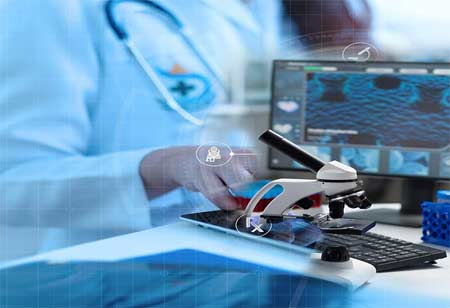Thank you for Subscribing to Healthcare Business Review Weekly Brief
Advancements in Radiation Safety Protocols in European Radiology

Be first to read the latest tech news, Industry Leader's Insights, and CIO interviews of medium and large enterprises exclusively from Healthcare Business Review
Thank you for Subscribing to Healthcare Business Review Weekly Brief

By
Healthcare Business Review | Wednesday, January 03, 2024
Stay ahead of the industry with exclusive feature stories on the top companies, expert insights and the latest news delivered straight to your inbox. Subscribe today.
Europe's radiation safety protocols prioritise patient care, minimising exposure through advanced technologies like ALARA and AI, enhancing diagnostic capabilities and patient-centric approaches in healthcare.
FREMONT, CA
Radiology plays a crucial role in modern healthcare, aiding in the diagnosis and treatment of various medical conditions. However, the use of ionising radiation in medical imaging procedures poses potential risks to both patients and healthcare professionals. In Europe, stringent radiation safety protocols are implemented to minimise exposure and ensure the well-being of individuals undergoing radiological procedures.
Current Radiation Safety Protocols in European Radiology
European radiology is guided by a robust framework of radiation safety protocols that prioritise patient care while minimising radiation exposure. Key elements of these protocols include:
ALARA Principle: The "As Low As Reasonably Achievable" (ALARA) principle is the cornerstone of radiation safety in European radiology. This principle emphasises the importance of minimising radiation exposure to the lowest possible level without compromising the diagnostic value of the imaging study.
Dose Monitoring and Optimisation: Advanced dose monitoring systems are employed to track and optimise radiation doses in real-time. These systems allow radiologists to adjust imaging parameters to ensure that diagnostic quality is maintained while keeping radiation exposure as low as possible.
Quality Assurance Programs: Rigorous quality assurance programs are implemented to maintain the accuracy and reliability of radiological equipment. Regular calibration, maintenance, and performance testing are conducted to ensure that equipment operates within specified parameters.
Effectiveness of Current Protocols
The effectiveness of current radiation safety protocols in European radiology is evident in the substantial reduction of radiation doses over the years.



